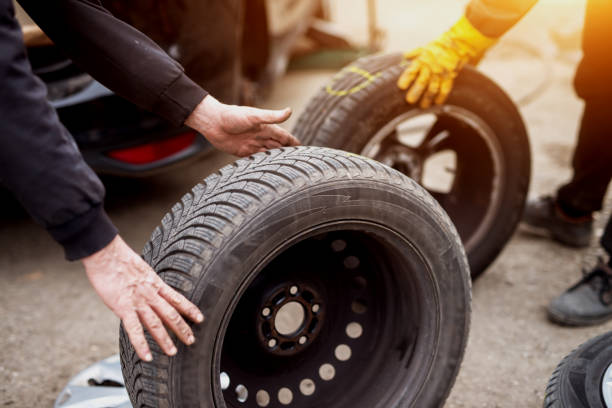Barely any car owner cares about the tread depth of a car. Examining the tyre’s tread depth is pretty straightforward, but they only have a check-up when it is time for an MOT test. They fail to realize that it is an important task and one they should be vigilant about.
A car’s grip heavily depends on its tyre tread depth, no matter its type. The amount of traction it provides dictates the safety of the driver, passengers, and pedestrians. Recently, cars come equipped with anti-lock braking systems (ABS) and electronic stability control systems (ESP). These systems enhance the grip during driving. The tyres brand need to be in pristine condition for these systems to perform optimally.
In this article, we will explore the world of tyre tread depths.
What Is A Tyre Tread?
The tyre part that makes contact with the road surface is known as a tyre tread. Tyre tread comes in several patterns. Each design is made to combat unique driving conditions and improve the car’s traction and handling. There are four parts of a tyre tread
Ribs – It is the elevated part of the tread pattern comprising of tread blocks.
Grooves – They are deep channels that run along the tyre’s circumference and lateral section.
Tread blocks – These are the rubber segments in a raised platform that has direct contact with the road.
Sipes – The sipes are the small, thin apertures in the tread.
Tyre manufacturers play with the arrangement of these components to change the performance of the tyres in different areas like grip, handling, wear and noise. They can also create tread patterns to accommodate specific driving needs which includes wet braking, dry handling, aquaplaning (hydroplaning) resistance, and grip on icy and snowy roads.
You can get various tread patterns in the market now. But there exists only three broad categories – symmetrical tyre tread pattern, directional tyre tread pattern, and asymmetric tyre tread pattern.
Why Is Tyre Tread Important?
Many are of the view that wheel and tyre size do not matter, but this is not true. Only a small section of a tyre known as a contact patch touches the road surface. The size of this contact patch is the size of your palm. That is why it is paramount that the patch provides as much grip as possible.
Tread depth is the depth of the grooves surrounding the tyres. A higher amount of tread depth means the tyres have lesser wear, which in turn results in better traction. Tyres need to be in their best condition as a small amount of material has to do the most work. Thus it falls on you to ensure that your tyres have adequate tread depth.
Legal Minimum Tyre Tread Depth
As per the UK government, 75% of the surface area of each tyre of a car must have a minimum of 1.6mm tread depth. But, you should not wait to replace your tyres until they reach 1.6mm tread depth. Replace them when they reach a tread depth of 3mm – below this tread depth, the traction reduces considerably.
Generally, a brand new tyre comes with a tread depth of 8mm.
What Is The Work Of A Tyre Tread?
The utility of tyre tread is to flush out water from under the tyre. The rotating wheel consists of grooves that have the ability of a pump and sucks water from the contact patch. Therefore, it dries the road surface. A properly maintained tyre can disperse about 15 litres of water each second.
A decrease in tyre depth lessens the ability of a tyre to disperse water. Plus, there is an aquaplaning risk – by aquaplaning, we mean the instance where the tyre skims on the water surface, not on the road. Aquaplaning adversely affects steering and braking ability, thereby becoming a reason for accidents. It won’t occur if you take proper care of tyres.
Indicators Of Tyre Tread Wear
Inculcate the habit of inspecting your tyres a minimum once every week. Nowadays, all tyres come with tread depth wear indicators etched into them. Thus, you only need to spare a few minutes of your time to check it. The indicators have an appearance of rectangular horizontal ridges. These indicators edge nearer to the surface of the tyres as they wear out. They become visible when they line with the surface. It indicates that your tyres need immediate replacement.
How To Inspect A Tyre?
You can visually inspect if the tyres of your vehicle are nearing the legal minimum tread depth. Even then, you should have a comprehensive check-up as frequently as possible. You only need a 20p coin to do the inspection. Any good car accessory shop stores tread depth gauge. You can purchase one for a more accurate reading. If you doubt your ability to correctly interpret the tyre condition, take the help of a mechanic.
In conclusion, the tyre tread depth of Tyres fitted near me ensure the safety of all.






